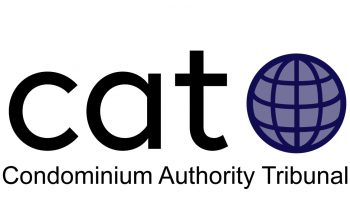
October 1, 2023
Condominium Authority Tribunal
C/O Condominium Authority of Ontario
P.O. Box 69038, RPO St. Clair Centre
Toronto, Ontario M4T 3A1
Attention: Ian Darling, Chair, Condominium Authority Tribunal
CC: Robin Dafoe, Chief Executive Officer & Registrar, Condominium Authority of Ontario
Mr. Darling,
While Ontario’s Condominium Authority Tribunal (CAT) was formed in 2017 on best laid plans, regrettably, over its past five years of operations, it has come with unintended consequences.
The commendable objective of our legislators was to create a more effective and streamlined dispute resolution process for condominium communities. To that goal CAT is clearly a success, in large part by removing barriers for individuals to file claims without legal representation.
However, unintentionally it’s also enabled filing of frivolous and in some cases vengeful claims against innocent respondents, requiring them to defend themselves and leaving them with little or no recourse for recovery of their costs when the matter is eventually dismissed.
Recently, I heard about a condo resident who was dragged through a clearly baseless claim that made it all the way to Stage 3 before being dismissed. They were added as a respondent along with the condominium corporation. As the legal nature of the CAT process was overwhelmingly stressful, the resident felt they had no choice but to hire a lawyer. In the end, the matter was dismissed as it should’ve been from the outset. However, CAT allowed the matter to proceed through each stage, failed to suss out the underlying issues nor sufficiently encouraged the parties to seek resolution at the outset, before allowing the claim to proceed. As a result, they incurred significant legal fees – that CAT ignored addressing at the end. It’s unfair and unjust.
The flaw in this case and in general is that CAT protocols are too heavily weighted to the end of the process. It’s not until Stage 3 that evidence is required and when matters get escalated to CAT’s members that are lawyers, who typically are well versed at addressing outcomes.
To fix this flaw the CAT needs to be more diligent from the outset, during the intake process. Raise the bar for getting to Stage 1 by conducting a more rigorous assessment of the merits of a claim, establishing a minimum evidentiary threshold, and vetting out those (or the parts of a claim) that are not within CAT’s jurisdiction.
Furthermore, CAT could enhance its guidance for claimants/respondents that are not lawyers or paralegals. Facilitating ease of access to CAT and removing barriers is a noble purpose – but it comes with a responsibility to shepherd those in the flock that don’t know their way through judicial processes, protocols, and the onus of conducting themselves in good faith throughout.
Otherwise, CAT is prone to misuse by those who don’t understand or respect its process, and rife for misuse by those who may look to weaponize CAT for their personal agenda.
To mitigate this risk and to deter those inclined to misuse the system, CAT needs to become more proficient at its front-end, vetting out frivolous claims and rejecting those outside of its jurisdiction.
By implementing a more rigorous intake process, CAT can ensure that it fulfills its objective of providing an efficient and accessible dispute resolution process for condominiums and owners/residents. As CAT expands its scope, Ontario condominium communities will be better served by a Tribunal that more effectively balances access with fairness.
Sincerely,

Bruce W. Young, CPA, CA, CEA
Disputes & Litigation Advisor & Condominium Owner
CollectiveAgreement.ca






